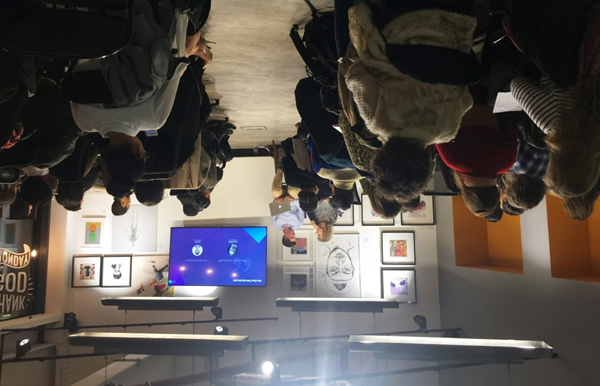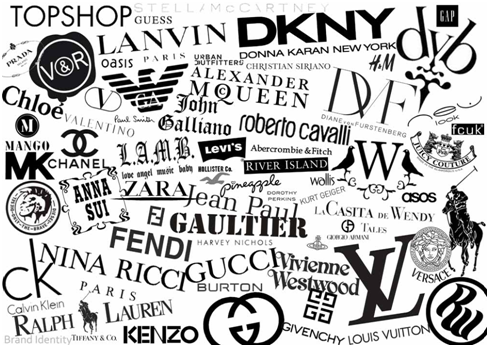

FASHION ANGEL SELLING FASHION ONLINE TALK SUMMARY
We were pleased to host one of our quarterly networking events at Work.Life Camden, with the focus this time on how to start selling online and increase sales.
The evening was a sell-out with over 50 guests including Fashion Angel Business Club members, fashion entrepreneurs and online retailers covering a wide array of markets from babywear, streetwear, luxury swimwear, female incontinence underwear to fine jewellery.
I had the pleasure of interviewing Alex Ford, Business Development Manager with award winning web design agency Space Between*, who kindly sponsored the event. Alex was very generous sharing with us his extensive knowledge, garnered from working with some of the top online retailers.

Selling Online Talk
The focus to start with was to discuss what is the best platform for setting up an online boutique (Shopify highly recommended) and then tips and advice for how brands can start selling online quickly and cost effectively. For those already selling online, we discussed the key areas of a website that can be easily improved, to ensure that customers are more likely to make a purchase including some “quick-wins” that attendees could take away and action themselves.
We also talked about driving more traffic to fashion retail websites, as well as the challenges of digital marketing and the high costs associated with PPC and SEO campaigns.
One question several attendees wanted to know, was what the “average” conversion rate is, and what realistic conversion rate can be expected. For many retailers 0.8 – 1% is typical, however Alex told us by improving a website and having a clear marketing strategy, higher conversion rates of 4-5% and above, should be possible.
To reach meaningful sales, it likely budget will need to be allocated to Per Per Click (PPC) advertising , either via Google or Facebook/Instagram. Many attendees wanted to know how much they would need to budget for. Alex mentioned that there was a calculation that they often use to give an indication on how much you could look to spend on a PPC campaign using your identified key words, and the expected return on investment.
It is important to note, these calculations are based on loose assumptions and will be affected by factors such as product price, profit margins and importantly your website conversion rate. All these factors are used in the calculation to understand a cost per click (CPC). So if you can increase any of these factors you will be able to reduce your CPC whilst remaining competitive.
For start-ups, calculating this figure is hard to figure out as there won’t be previous conversion data from your website. Therefore it is really important as soon as you start trading online that you set-up Google Analytics and conversion tracking on your website. Once you have this set-up you should calculate your CPC at least monthly as this will allow you to adjust spend up or down as you collect more data on your website and customers.

Alex’s tips on how to calculate your PPC /ROI
- Calculate your profit margin – This is the price you sell the product for minus all other costs (fixed & variable). This calculation should leave you with a figure that is pure profit after everything has been accounted for.
- Calculate your un-branded conversion rate – The conversion rate is the amount of sales you generate versus the amount of visitors your site attracts. Say your site attracts 100 visitors and you convert 10 of them into sales this would give you a conversion rate of 10% (very healthy!).However, if you are selling branded goods you must consider that some of that traffic was searching for a specific brand and was therefore highly qualified looking for a specific product.Say the brand was NIKE trainers and out of your 10 sales 3 of them had landed on your site with a search term “blue nike trainers” rather than “blue trainers” then the NIKE search term would be considered a branded conversion.In order to make a accurate estimation of the conversion rate of your site without high-intent traffic we must remove branded search queries from our calculations. In our example we would make 7 unbranded sales giving us an unbranded conversion of 7%.
- Calculate Break-even CPC – The break-even cost per click is the amount you can afford to spend per click but not make any profit. This is an important number to know as you will generally not want to go over this figure unless in a high competition marker with a BIG budget.Let’s assume your profit margin for a £100 product is £40 and you have a conversion rate of 2%.To calculate your break-even CPC you multiply your conversion rate by your profit per sale.0.02 x £40 = £0.80 . Therefore the break-even CPC would be 80p.
- Adjustments for Profitability with Max CPC – You should always set your maximum CPC below your break-even CPC. Doing so ensures that every sale is making you a profit. If you don’t do this, every sale could be costing you more than you make in profit.If you lower your max CPC you will generate a higher return on advertising spend (ROAS) however, lowering it too far will result in lower total amount of sales.Whilst you set your max CPC, due to how Google AdWords works, your actual CPC spend (commonly known as Average CPC) will be about 20% lower than your max CPC.For example if you set your Max CPC to £1 your actual CPC will likely be £0.80.Hitting the sweet spot for CPC spend is a tricky business, but as a rule of thumb you should be aiming for a maximum CPC spend of 70% of that of your break-even CPC. At this level you will be generating a clear 30% profit but also attaining a good volume of sales.
This calculation should give you a rough estimation on how much you should be spending on CPC.
As a rule it is far easier for retailers to increase their conversion rate, than it is to increase their product price or profit margin, which is why many large retailers focus heavily on increasing conversion rates.
At Fashion Angel we offer fashion business mentoring, events, workshops and access to start up loan funding to fashion start-ups and established fashion business entrepreneurs. We are here to help and to give you the support you need at all stages of your business journey.
Our expert mentors can give you guidance with our 1-2-1 business mentoring packages. Fashion Angel Business Club members receive 20% discount on our mentoring and events and have access to FREE downloadable toolkits, a suppliers directory & other benefits, all tailored for the fashion industry.
By Alison Lewy MBE


